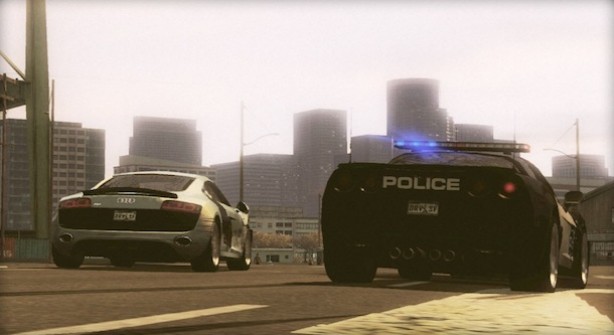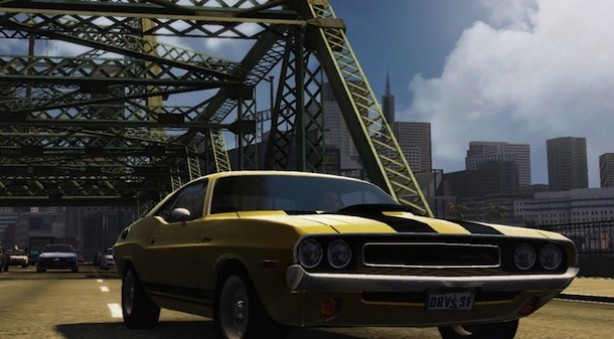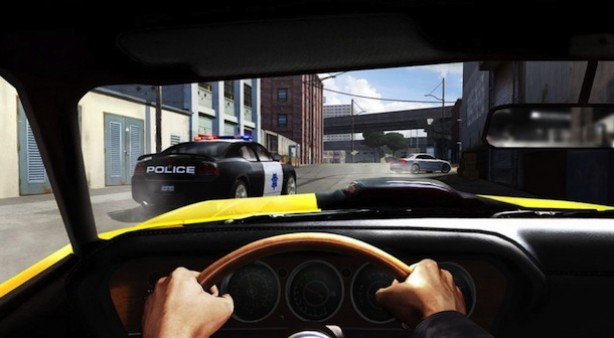Driver: San Francisco Review
![]() Game: Driver: San Francisco
Game: Driver: San Francisco
Developer: Ubisoft Reflections
Publisher: Ubisoft
Available on: Xbox 360, PlayStation 3, Nintendo Wii, PC, Mac OSX (Reviewed on Xbox 360)
There are two types of people that always seemed to love the Driver series of games, there’s the people that grew up playing video games who, once they got their hands on the first Driver game back in 1999, realised that what they had their hands on was one of the most thrilling, graphically pleasing and realistic driving game of the year quickly gaining momentum as a fan favourite. The other group of people who seem to enjoy the Driver games a lot are the parents of those kids that grew up playing a PlayStation as their first major console. The parents that grew up in the 70’s watching films such as Bullit, Driver, and The French Connection as well as TV shows such as Starsky and Hutch, just wishing that they could get their hands on one of those cars and take it for a spin; now they could, in a fashion at least.
The last couple of Driver games haven’t really lived up to the promise of that first game from over a decade ago, but with Martin Edmonson back at the helm for the first time in years is Driver: San Francisco the moment when the entire franchise comes back in from the cold?
STORY: It’s almost impossible to talk about anything within the story of Driver: San Francisco without spoiling one major plot point: the entire game takes place in Tanner’s coma dream. There, I said it. That plot point happens in the first ten minutes of the game so it’s not something that spoils the entire game while also helping to explain why Tanner could shift into other people’s bodies, adding a slightly paranormal aspect to the game that hasn’t appeared in any of the previous games.

San Francisco must be the world's most amazing city; even the police have supercars!
The story takes place 6 months after the end of Driver 3 (which I refuse to call Driv3r) and both Tanner and Jericho have managed to survive the events at the end of that game and make their way to the city of San Francisco. Jericho is in custody but manages to escapes, leaving Tanner to spend the rest of the game chasing him down and apprehending him once again, as well as trying to convince his partner, Tobias Jones, that he’s not going absolutely mental. While at first glance the story seems crazy and a complete detachment from what a Driver game actually is, it’s well told throughout with some drama and a little bit of comedy thrown in for good measure. It’s very reminiscent, sometimes too reminiscent at times, of a popular TV show Life on Mars (the British one, the American one doesn’t exist as far as I’m concerned), especially when Tanner starts being talked to through the radio of his car, and this can be a little off-putting, but it doesn’t happen too often so as to be totally turned off to the game, it just leaves a bad taste in general for a little while.
GRAPHICS: Back when the first Driver game came out in 1999, the visuals of the title were one of the things that sold it to a lot of people. Seeing what (as far as we were concerned) was an accurate depiction of the Dodge Challenger made us keep turning the game on over and over again. Driver: San Francisco carries on that idea by creating an amazingly vast cityscape for you to be able to play around in, with a crazy amount of fully licensed and destructible vehicles. One of the most impressive graphical aspects of Driver: San Francisco is the cutscenes, not because they look spectacular – which they do – but because of the seamless transition between pre-rendered footage and the in game sequences, all of this is accomplished with the same cinema style of some of those famous 70’s car chase films where an outside shot of the car (rendered in game) may be shown in the bottom half of the screen and a shot of Tanner and Jones (using pre-rendered footage) is shown on the top of the screen. Most people won’t have seen this technique used before, and certainly not in games, so seeing it here in a game that’s so obviously influenced by American muscle cars and the films they appear in does a lot to add to the overall feel of the game.
SOUND: The Driver games have always had some pretty decent sounds associated with them, especially seeing as they concentrate on classic 70’s American muscle cars that a lot of us will have seen by watching classic chase movies such as Bullit and The French Connection, those engine sounds need to come across as perfectly as possible and Ubisoft Reflections have done a really good job. The other aspect of the sound that comes across quite well in Driver: San Francisco is the music that can be played in the vehicles once you’ve taken them over. There are a good selection of licensed music tracks that you can scroll through using the D-Pad on the controller and there’s pretty much something there for everyone. The only thing better than sitting on the Golden Gate Bridge listening to the engine of a 1970 Dodge Challenger purr before putting your foot down would be to do it in real life, and that’s not going to happen any time soon for most people.

Tanner is able to not only shift into the bodies of other people, but also take his number plate as every car has the license "DRV SF".
GAMEPLAY: The gameplay in Driver: San Francisco is more or less the same as it has always been in any of the Driver games: you’re given a mission and you drive off and get it done. The main difference with this new entry in the series is that you’re able to perform a “Shift” mechanic and use Tanner to take over the bodies of other people in the game world and use them to accomplish whatever you need to do. More often than not this comes into use when you need to drive somebody off of the road. Possess somebody going in the opposite direction, slam into your pursuers and shift back into your own body, job done. Another part of the gameplay that is used quite often is the same mechanic that was used in the Burnout games. Drive without any kind of due care and attention and you’ll be rewarded for it in the form of “Willpower” which you can use to purchase cars and upgrades. Driving down the wrong side of the road, nearly hitting other cars, performing jumps and many other things all generate willpower.
Getting away from the main story mode – because there’s so much more that you can be getting on with once you’ve finished that – there are lots of challenges that you can occupy yourself with. Some of these are your standard racing type of challenges; get through these checkpoints within a certain time limit, perform this jump while in first person view mode, and then some of them are challenges that could only come from a game which is influenced so much by classic car movies. There are a selection of movie challenges that are unlocked by collecting movie icons throughout the game world and once unlocked, these challenges allow you to recreate some of those chases from those movies we all know and love. Feel like racing through the streets of San Francisco in a green 1968 Ford Mustang, recreating the famous car chase scene from Bullit? Sure, why not! How about chasing down a potential suspect in a red Gran Torino? You can do that too, as well as many more classic chases scenes that will drive you (pun intended) to find every single one of those movie icons within the city just for the chance to play them.

Driving on the wrong side of the car never looked so pretty!
The multiplayer mode is also a welcome addition to the Driver series and there are multiple game modes to keep people interested as well as the levelling mechanic that seems to be getting more and more popular with multiplayer gaming. At each level you will unlock something new, it might be some new icons or the ability to add a new car to your repertoire, or it might be a new ability that allows you to change your car on the fly. Whatever it is you can be sure that levelling up in Driver: San Francisco’s multiplayer modes is just as addictive as it is in other games that use the same mechanic, and probably something that will be played for quite a while to come.
LONGEVITY: Driver: San Francisco is one of those true sandbox games that give you something to do for as long as you want to play them for. With Driver, on top of all that’s built into the game for you to spend your time doing, you can also (for example) take over a cop car and chase down some getaway vehicles, which you can do to your heart’s content. Doing these little tasks earns willpower points, which is the currency for the garage, allowing players to buy new cars, upgrade and other thing, increasing the longevity of the game even further.
VERDICT: After several disappointing Driver games, Driver: San Francisco is a return to form. The sheer amount of roads that are available to be driven on is astounding, and on top of that add the multiplayer modes, the plethora of game modes, challenges and stunts that can be accomplished and you’re left with a game that will last hours and hours of game time. The shift mechanic is a little hard to get used to, especially coming from a game that’s usually quite grounded in reality, but it doesn’t take much to get used to and once you have you’ll be set for a really enjoyable experience.






